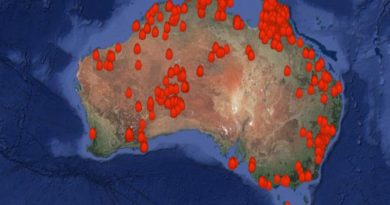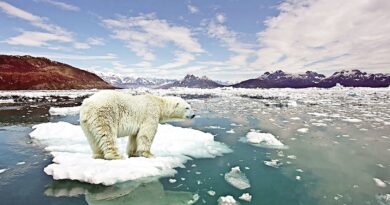Invasive, alien, most fearsome | TV Sajeev
With so little known about its origin and pathogen emission rate, SARS-CoV-2 is the greatest challenge to mankind
Given the little knowledge we have about its origin, and given its rapid spread and massive impact on our lives, novel coronavirus is the most fearsome invasive alien species mankind has ever had to confront. Invasive alien species are species of plants, animals and microbes which move out of their native location into alien locations and cause economic, ecological and health damage.
Features of an alien invasive species
All invasive alien species remain unproblematic in their land of origin where natural enemies limit their population increase. But when a species arrives at a new location, it escapes from the control of its natural enemies and its population explodes. In the case of SARS-CoV-2, the individual body of each and every host is a landscape in itself. Unlike in the case of SARS, where the virus jumped from bats to civet cats to humans, the intermediate host for SARS-CoV-2 remains unknown. The host is devoid of immunity against the pathogen. With no prior exposure to it and no antibodies, the body initiates a violent response against the new intruder, which could prove fatal.
In its new location, the invasive species can grow and reach the reproductive stage. One way of controlling biological invasion is to slow the spread. The idea of imposing lockdowns originated from this logic of slowing the spread. Unlike plants and animals which can be visually encountered, we need to contact-trace and test people to find out the extent of spread of this pathogen.
A salient feature in the pattern of the spread of invasive alien species is the formation of satellite populations. SARS-CoV-2 has established the largest number of satellite populations in the shortest period of time. Every satellite population has the potential to spread the virus on its own. This spread is a function of the reproductive rate of the virus (R0), which is defined as the number of cases, on average, an infected person will cause during the infectious period. For SARS-CoV-2, the pathogen emission rate from an infected person is yet to be computed. The dispersal ability is closely linked to social contact, which is influenced by the level of urbanisation. The susceptibility of new landscapes (new human bodies) is a function of health, which again is a function of age, disease history, and how much the respiratory system has been challenged by ways of air pollution, respiratory diseases or smoking.
R0 is a critical value in the case of all invasive alien species. If it is less than 1, the disease will vanish without causing an epidemic. As it goes above 1, the probability of an epidemic increases. In the absence of precise data for computing the R0 of SARS-CoV-2, the estimated value is somewhere between 1.5 and 3.5 and is zeroing in on 2.2. There are mainly four reasons for not arriving at a precise value. First, the basic properties of this viral pathogen, such as the infection period, are unknown. Second, we don’t know how many mild cases of infections that do not result in symptoms have been missed but are spreading the disease. Third, we don’t know about the precise susceptibility of a wide range of communities with different social structures. Fourth, no one knows the future impact of measures such as travel restrictions, social distancing and self-quarantine and how they influence the virus’s continued spread. This means that our understanding of SARS-CoV-2 transmission is data-deficient.
The SARS-CoV-2 outbreak has brought the global economy to its knees. The virus has infected 1.9 million, killed more than a lakh and put a huge strain on health systems. But its impact on the ecology is positive. Carbon emissions have decreased, and nitrogen dioxide emissions in northern Italy, Spain and the U.K. have faded. The sustainability of improved air quality will be seen soon.
The question of herd immunity
The critical question is how long the pandemic will last. It will probably continue until the pathogen reaches the point of naturalisation, i.e., when it stops being invasive. This means that the quicker the ‘herd immunity’, the faster the pandemic will end. Since we don’t have a vaccine yet, the only other way to build immunity is to do so naturally, which is happening in the recovered cases. Herd immunity has to rise to a level at which disease transmission will reduce considerably or become impossible. Until then, the lockdown will ensure that the R0 value is maintained as low as possible. We will know only when the lockdown is lifted whether keeping the R0 value well below 1 for a reasonable period of time will really help us. The length of the period during which infected ones, with and without symptoms (we don’t know the length of this period yet), spread the disease will decide how best we move out of the pandemic and how much time nature will get to repair itself.
T.V. Sajeev is former coordinator, Asia-Pacific Forest Invasive Species Network, and Senior Principal Scientist, Kerala Forest Research Institute
It was originally published by The Hindu




